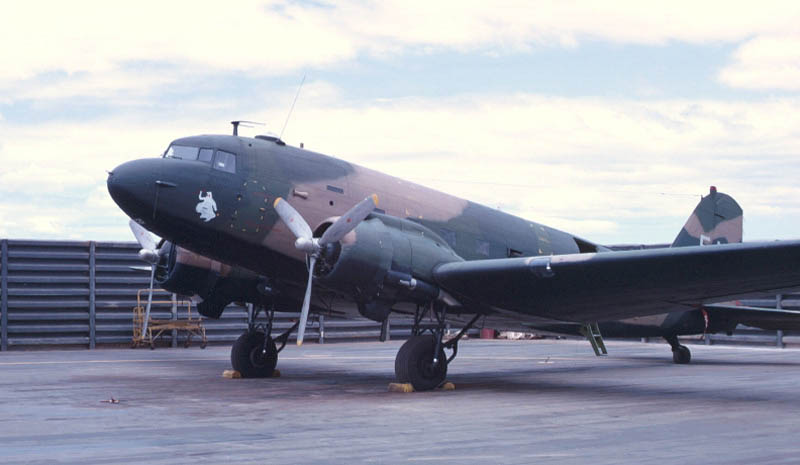WARBIRDS RESOURCE GROUP > VIETNAM > PREVIOUS PAGE
Operational History

[Source: U.S. Air Force]
As the United States began Project Gunship II and Project Gunship III, many of the remaining AC-47Ds were transferred to the Vietnam Air Force (VNAF), the Royal Lao Air Force (RLAF), and to Cambodia, after Prince Sihanouk was deposed in a coup by General Lon Nol.
Retrofitted AC-47s are still in use in Colombia, where they are known by civilians as Avion fantasma (ghost planes). They are successfully operated by the local airforce in COIN operations in conjunction with AH-60 Arpia helicopters (an armed variant of the UH-60) and A-37 Dragonflys against local illegal armed groups. These are mostly likely the five BT-67s purchased by Colombia with 12.7mm machine guns (of unknown type) slaved to a Forward Looking Infrared (or FLIR) system. For more information see Colombia: Seguridad & Defensa. The BT-67 is a variant of the C-47/DC-3 made by the Basler Corporation of Oshkosh, WI. These "Turbo Dakotas" feature Pratt & Whitney Canada PT6A-67R turboprops, driving five-bladed Hartzell propellers, along with essentially overhauling the basic airframe.
Variants of the AC-47 based on various iterations of the airframe including the BT-67, have been used by Laos, Cambodia, South Africa, and Rhodesia, to name just a few, and with a variety of weapons configurations including gatling weapons of numerous types, various medium and heavy machine guns, and larger autocannon (South African "Dragon Daks" were known to fit 20 mm cannons).
Operators
Current Operators
Colombian Air Force, Air Force of El Salvador, Royal Thai Air Force
Former Operators
Royal Cambodian Air Force, Royal Lao Air Force, Rhodesian Air Force (operated locally built gunship modification of C-47 aircraft), South African Air Force, Vietnam Air Force, United States Air Force
Sources:
Wikipedia
WARBIRDS RESOURCE GROUP > VIETNAM > PREVIOUS PAGE
